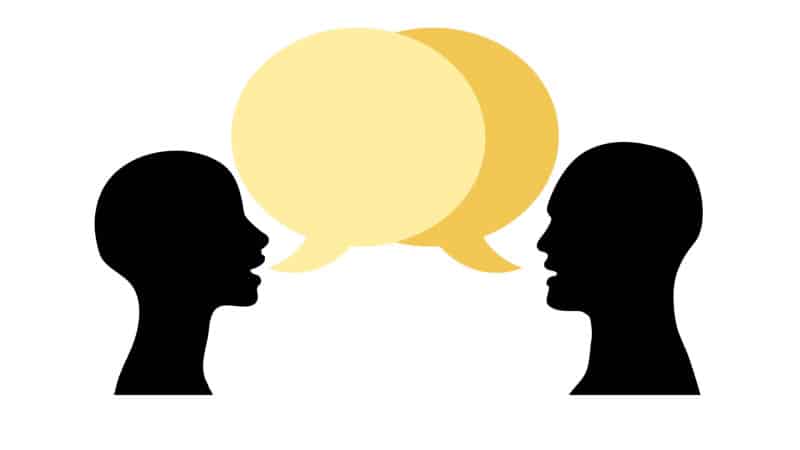Communication is a very vital part of every relationship. In marriage, it triggers conjugal bliss, in friendship, it can make someone your bestie, and in business, it has the power to sustain the interest of your market segment. So, let’s talk about marketing communication.
Marketing communication is any means adopted by a company to get information about its products to its target market. In other words, the ways a company employs to communicate its products to its target customer. It is the promotion under the 4P model or the communication under the 4C model of the marketing mix. A properly done marketing communication increases market conviction. That is, it convinces customers that your product is worth buying. Thereby, increasing returns.
What Are the Examples of Marketing Communication?
Television, radio, digital content, applications, social media, message tools, games, events, magazines, mail, graphics, public speaking, and meetings are all examples of marketing communications channels.
What Is the Role of Marketing Communication?
The goal of a marketing communications professional is to create messages that inform or educate, persuade, remind customers of a need they have, reassure, and/or set one product or brand apart from another. In the end, you want to send out messages that your current and potential customers will respond to.
Objectives of Marketing Communication
Now you already know the definition of marketing communication and its worthiness in the marketing environment. But what are the targets you’ll want to punch with this important tool? The list below, of the objectives of marketing communication, answers it all.
-
Awareness:
This is the most common objective of marketing communication. It helps new companies to broadcast their presence to the target consumers and established firms to remain relevant in the minds of their market segment. So, this helps paint and reinforce the image of your company in the minds of the consumer.
-
Attitudes:
Sometimes companies become victims of unanticipated events that could tarnish their public image if left to run its course. So, another objective of marketing communication will be to correct the wrong notion about the company. British Petroleum is a good example of this. They invested millions in advertising to explain their clean up efforts to the public following its infamous Gulf of Mexico act in mid-2010.
-
Purchase Intent:
Another objective of marketing communication is to tell you the reasons why you should go for a product. Why do you want iPhone 11 pro when you already have iPhone 11? Because the commercial listed more interesting features that you want to have in your palm.
-
Brand switching:
By applying this objective, a company aims at convincing swing customers on the superiority of its product over that of a competitor. For example, a detergent firm creating ads that indirectly shame other detergents.
What Is Marketing Communication Process?
The marketing communication process comprises of coordinated operations that identify the intended audience. Despite the fact that a well-coordinated advertising program is ready to elicit the required response from the audience.
What Is the Best Marketing Communication?
Advertising is one of the most prominent and commonly utilized communication methods in a marketing strategy, as its primary function is to raise awareness. Advertisements may be helpful for selling not just your product or service, but also your brand.
Types of Marketing Communication
Different types of marketing communication are used in different markets. While the industrial market requires a more personal approach, the consumer market requires a more impersonal approach. Below are the four fundamental types of marketing communication.
-
One-to-many:
This type of marketing communication is used to broadcast information to the market segment from a single source. Examples are bulk SMS and WhatsApp broadcast messages.
-
Many-to-one:
Means to this is usually connected to a one-to-many type of marketing communication. For example, the reply button in a bulk email.
-
One-to-one:
In this, there is extensive interaction between the customers and the firm. So, the customer gets all the clarification they want with almost zero delays. Contemporarily, firms especially startups find it easier to achieve this via online instant messaging platforms like WeChat and Facebook.
-
Many-to-many:
In this many representatives of a firm can interact with customers at a time. For example, online chat rooms.
What Are the 4 Types of Communication?
There are four primary forms of communication: vocal, nonverbal, written, and visual.
What Are the Four Elements of Marketing Communication?
Marketers interact with customers. This has been designated as “Promotion” in the 4P marketing categorization. Promotion is thought to consist of four aspects according to the 4Ps. Advertising, public relations, sales promotion, and personal selling are examples of these.
READ ALSO: EFFECTS OF ADVERTISING AND PROMOTION ON SMALL BUSINESSES
Marketing Communication Process
Essentially, every communication is a process of exchanging verbal and non-verbal messages between two or more parties. The components of this process in marketing communication are source, encoding, message, channel, decoding, receiver, and feedback. You know one big turn off in a couple’s gist is an off-context response. Crazily some folks can jilt you cos of that. So also, if any of these components of the marketing communication process go wrong, you’re likely to lose customers.
-
Source:
This is the sender of the message. The marketing communication process begins here. Imagine Trump, who likes burgers, featuring in a Vegan commercial. Well, that’s a big oxymoron. So, firms should craftily select the source of their message.
-
Encoding:
You’d have noticed that some firms use slangs, punch lines familiar to their marketing segment in some of their commercial. This is a good example of message encoding in marketing communication.
-
Message:
The message is the main idea the source hopes to convey to the target audience.
-
Channel:
This is the medium through which communication takes place. It can be personal or non-personal. While personal involves direct interaction, non-personal involves indirect interaction between the two parties involved. Examples of personal channels are person-to-person interaction through emails and instant messaging. And examples of non-personal channels are print media (newspapers, magazines, and billboards) and broadcast media (radio and Television).
-
Decoding:
Decoding is the proper interpretation of an encoded message. Hence, for effective communication, the receiver’s decoding must match the sender’s encoding. Else to the receiver, the sender is just soliloquizing.
-
Receiver:
This is the potential customer the sender wants to get the message across to.
-
Feedback:
Feedback is the reaction from the customer after receiving the message. It could be questions, comments, or any response about the message.
What Are Marketing Communication Tools?
Direct marketing allows businesses to interact directly with their customers. Emails, text messages, catalogues, brochures, promotional letters, and other tools are examples of direct marketing techniques. Messages are delivered directly to end customers through direct marketing.
Importance of Marketing Communication
-
Fosters Branding:
In marketing communication companies try to popularize their mantra. And this is important because the mantra becomes associated with the brand. Also, because it gets repeated and you know anything that gets repeated gets remembered and anything is remembered gets done.
-
Fosters Customer Relationship:
Every thriving relationship usually has one thing in common. A good two-way communication. This doesn’t apply to relationships alone it’s also an importance of marketing communication. Because through it trust and confidence are established between customers and companies.
-
Creates a Competitive Edge:
Understanding this importance of marketing communication helps a firm compete against a formidable competitor. Hence, they create promotions that help make them outstanding in the market.
-
Improves Sales:
As a rule of thumb, the marketing and the sales department of a company work as the backbone of each other. So, the joint force of these two causes a significant improvement in product sales.
-
Pushes Innovation:
So, more than bringing new marketing ideas that will awe potential consumers. Creating innovations that will make products better than that of a competitor is another very good importance of marketing communication. Because it will be some screwball shit to bring a stale product to compete with more recent ones. Hence, this constantly tries to make the industry more advanced and bring better products to consumers.
Conclusion
I hope this article gives you all you need to know about marketing communication






